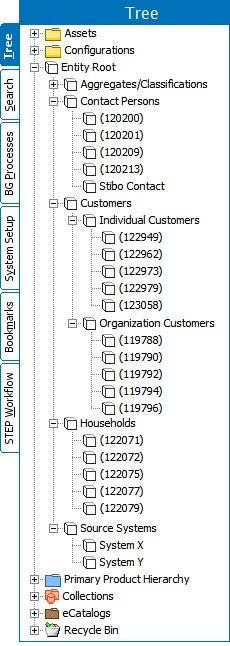STEP uses four types of object super types to model data: products, classifications, assets, and entities. Entities are the suggested object for modeling customer, suppliers, contacts, and household data. Some benefits of entity object types include:
- May be configured as globally revisable, which requires no approvals or workspace revisions, and instantaneous updates.
- References can be configured as parent-child relationships.
- Support for Matching and Merging.
- Support for Dun & Bradstreet integration.
- Support for Experian Email Validation integration.
- Support for Policy Data Monitoring
Some limitations on using entities are that they do not support inheritance, translations, specification attributes, and specification data container types.
For more information on entities in STEP, refer to the Entity Maintenance topic in the Getting Started documentation here.
Domain Folders
In STEP, any Entity must have a parent Entity. In an MDM solution, this relationship does not provide any semantic meaning. Therefore, very little effort should be put in to organizing parent/child relationships.
The recommended approach is to create 'Domain Folders.'
For traceability in the Workbench tree and when searching for records, it is recommended to split records governed by different matching algorithms into separate domain folders.
Source System Entities
Place all source systems into one folder as there are often very few to consider.

Dimensions and Contexts
Dimension specific attribute values and references should not be used in an MDM solution. However, a language dimension can be used for the purpose of translating data definitions as Attribute names, Reference Type names, Object Type names, and Data Container Type names in Web UI and workbench. This also means that the use of multiple Contexts only allows for translation of data definitions in the UI.